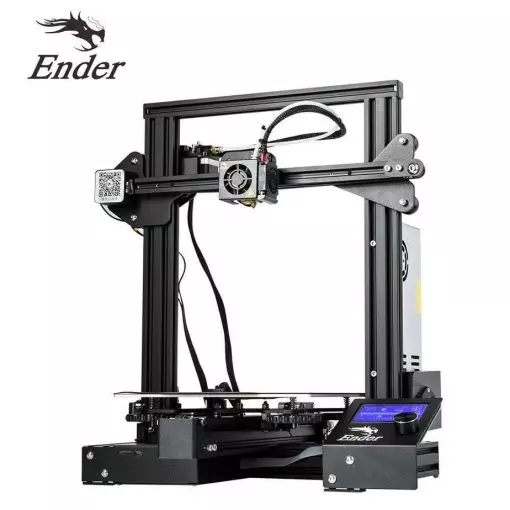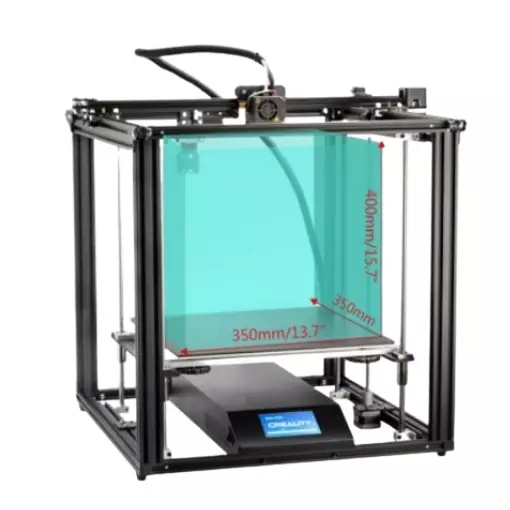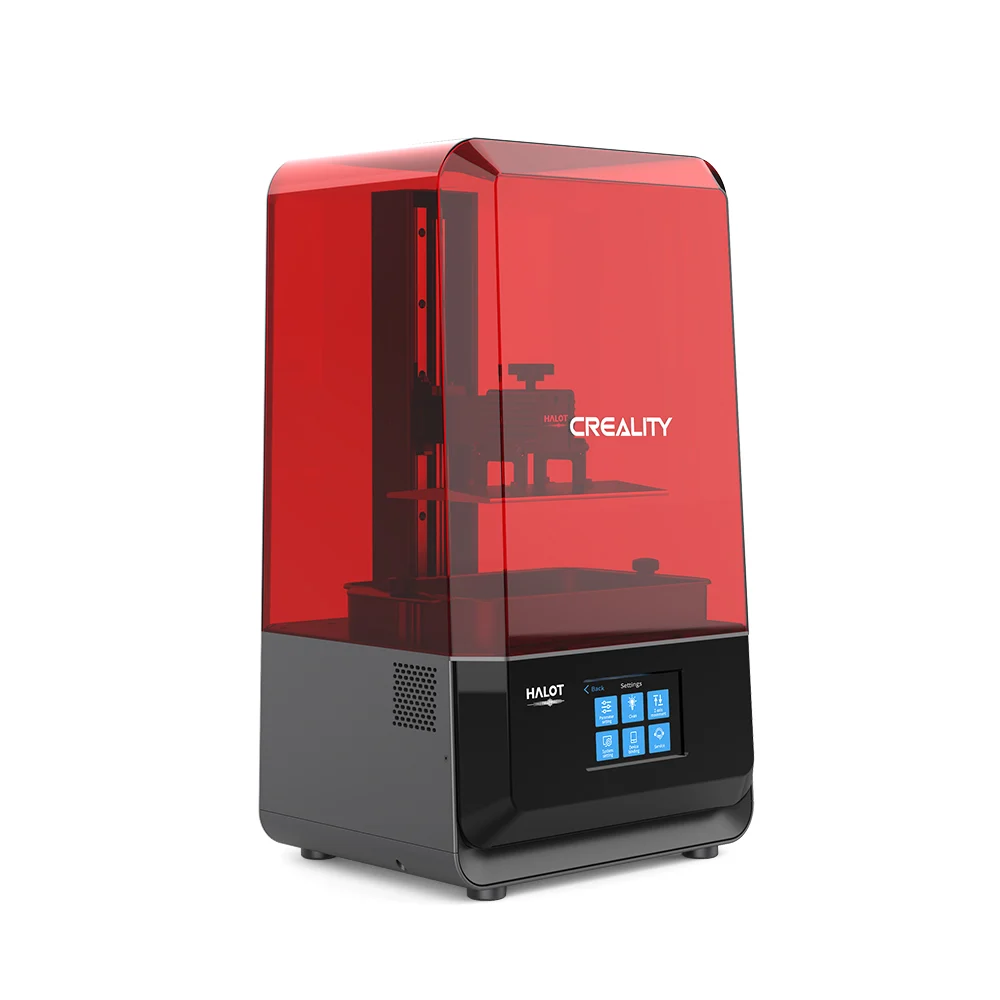Compare Ender 3 vs Ender 5 Plus vs Halot Lite
Comparison between the best 3D printers
Choose the best 3D printer at the best price. The cheapest 3D printers are here.
Buy a 3D printer here with 3D Fila.
 |
 |
 |
|
| Model | Ender 3[BUY Ender 3] |
Ender 5 Plus[BUY Ender 5 Plus] |
Halot Lite |
| Printing Material | Filament | Filament | Resin |
| Estimated price | $210,00 | $599,00 | $400,00 |
| Fabricante | Creality 3D | Creality 3D | Creality 3D |
| Release Year | 2018 | 2019 | 2021 |
| Print Volume [mm] | 220x220x250 | 350x350x400 | 192x120x200 |
| Printer Size [mm] | 440x440x465 | 632x619x666 | 330x301x572 |
| Weight [kg] | 6,62 | 18,2 | 10,6 |
| Power Loss Recovery | NO | YES | NO |
| Maximum Resolution [mm] | 0,1 | 0,1 | 0,01 |
| Processor | 8 bits | 32 bits | |
| Display | Mono | Touchscreen TFT 4,3'' | Display touchscreen 5'' |
| Power Supply | 24V / 270W | 24V / 504W | |
| Connectivity | SD / USB | SD / USB | SD / USB |
| Operating systems | Windows, Mac, Linux | Windows, Mac, Linux | Windows, Mac, Linux |
| Date of registration in the system | 2021-04-13 | 2021-04-14 | 2022-11-04 |
| Release date | 2018 | 2019 | 2021 |
| Extra features | The Ender 3 V1 is a DIY assembly 3D printer, a sales leader since 2017, standing out for its cost-benefit. With a wide printing capacity, it has a CNC machined structure for precision and stability. It offers high-precision prints with low noise, thanks to its innovative V-profile and pulleys. It has a self-adhesive magnetic platform for easy removal of models and excellent adhesion. The Ender 3 heats up quickly, reaching 100°C in 5 minutes, ideal for agile prints. It includes protection against power failures, allowing you to resume printing after interruptions, saving time and material. | The Ender 5 Plus offers a large print volume (350x350x400 mm) and fast assembly. It includes a BLTouch sensor, but with range limitations. It stands out for its dimensional accuracy, although it requires adjustments to the slicer settings. Despite the noise, its integrated design saves space, and includes features such as a filament sensor and power resumption. Ideal for large projects, it requires refinement in the settings for high-quality prints. | Crealitys Halot Lite printer stands out in the mid-size resin 3D printing segment, with a build volume of 192 x 120 x 200 mm and 50 micron resolution. It offers a monochrome LCD for fast and durable printing, and an upgraded light source that ensures over 80% uniformity across the print bed. It includes Wi-Fi connectivity for remote control and updates, an ARM Cortex CPU for efficient performance, and is compatible with Halot Box and Lychee slicing software. It also has an activated carbon filter to reduce odors. |
| Support for multiple colors and materials (AMS and CFS) | NO | NO | NO |
Notes * |
|||
| Cost-benefit | 6 / 10 | 6 / 10 | 8 / 10 |
| Hardware | 0.5 / 10 | 2 / 10 | 1.2 / 10 |
| Screen | . | . | . |
| Print volume | 3 / 10 | 4 / 10 | 3 / 10 |
| Performance | 1 / 10 | 1 / 10 | 9 / 10 |
| [BUY Ender 3] | [BUY Ender 5 Plus] |
Conclusion |
| In conclusion, the comparison between the Ender 3, Ender 5 Plus, and Halot Lite reveals distinct strengths and weaknesses among these 3D printers, making them suitable for different types of users. The Ender 3 stands out as an excellent entry-level option, offering significant value for its price. Its compact print volume and DIY assembly make it appealing to hobbyists and beginners who prioritize affordability and ease of use. However, it lacks advanced features like power loss recovery, and its print volume may not meet the demands of larger projects. The Ender 5 Plus, while being priced higher, provides a substantially larger print volume and advanced features such as power recovery and a BLTouch sensor. This printer is better suited for serious hobbyists and professionals working on larger projects, but it requires some fine-tuning in terms of settings to achieve optimal print quality. Its dimensions and weight indicate it may occupy more space, which could be a consideration in smaller workspaces. On the other hand, the Halot Lite enters the market with a focus on resin printing and delivers superior resolution capabilities. This printer is ideal for users seeking high-precision models, though its smaller print volume may limit its use for larger applications. The additional features like Wi-Fi connectivity and an activated carbon filter further enhance its appeal in a resin printing context. Ultimately, the best choice depends on the user's specific needs and budget. For those prioritizing cost-effectiveness with reliable performance, the Ender 3 is a strong contender. For users focused on larger prints and willing to invest more, the Ender 5 Plus provides excellent features. Meanwhile, the Halot Lite caters to those needing high-resolution prints with specialized functionalities, though at a mid-range price. Each printer offers unique benefits depending on your intended use, making them all worthy considerations in the current 3D printing landscape. |

